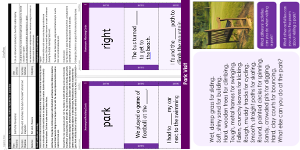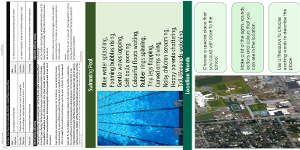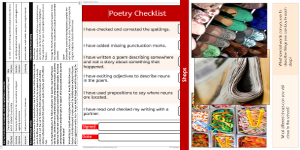Unit E – Special Places

This English scheme of work for Key Stage Two gets the children to create descriptive images to use in poetry to describe different places in the local community, identify and record the double meanings of words that are homonyms and build expanded noun phrases using powerful adjectives and prepositions.

Create descriptive images to use in poetry describing some of the different places that can be found in the local community

Lesson One : Word Homonyms
Explore how to select and match different homonyms that can be used to describe a special place that can be visited with family and friends

Lesson Two : Sentence Changes
Investigate how to choose some powerful words that can be used to replace weaker adjectives and prepositions in noun phrases about special places to visit

Lesson Three : Location Words
Practise selecting and compiling lists of vocabulary words that can be used to describe a special place that can be visited in the local area

Lesson Four : Poetry Lines
Explain and model how to combine collected vocabulary words to compose matching lines for an example poem describing a special location

Lesson Five : Poetry Writing
Explore how to draft and edit poems that contain expanded noun phrases to describe a visit to a special location in the local community
-

Theme Park Visit
Practise identifying and calculating the timing and duration of rides and events when visiting a theme park on a special family trip
-

Family Holiday Trips
Identify and record how to compose and publish recounts using adverbials of time and place to describe family holidays to different places in the world
-

Money Multiplication
Explain and model how to use standard written calculation methods to multiply money amounts in pounds and pence when solving number problems
-

Sport Teams
Explain and model how to use brackets and dashes to add extra information to sentences describing how to play sports and games as part of a team
